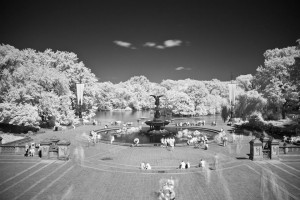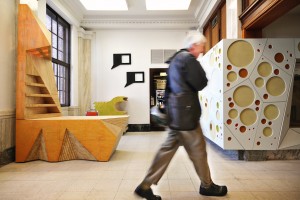It feels like we just started winter term a few weeks ago but here we are, already halfway through the term. It has been quite the ride (for the first years at least); but looking back, there have been a few valuable lessons that really changed the way we see architecture. We thought it would be interesting to share it with others here and make a mini “time capsule” for first years to remember. First year or not, it will be a profound read and may change your way of seeing life as it did for many of us who partook in it.
In Environmental Building Design (ARCH 126), we learned a lot on designing sustainably and what it means to be connected to our Earth. However, there was this one in-class activity that stood out and made us think in a non-conventional way. It taught us to listen, to truly listen.
It asked us to question and to investigate these questions:
If a building could speak, what would they say? How could we access their knowledge, wisdom, and stories?
Here is the list:
- Collect a teaspoon of dust from your building and place it in a teabag. Boil water and steep for 5 minutes. Drink.
- Massage the feet of a well-used table or chair. Stop only when it appears to be satisfied.
- Find the place where the structure meets the Earth. Try to fit yourself in between the two.
- Collect material found on the floor of your building and put it in your shoe. Walk around.
- Wrap yourself around your building. How does it feel to have it inhabit you?
- Find the place where the spiders make their webs. Spread your fingers and affix yourself to those same corners.
- If your building is joined with another, delicately ask about the day they first met. What were their first impressions? What are their thoughts now?
- Use a colour wheel or book of paint samples to survey your building. What are the dominant colour values?
- Find a photo of your building. Try to mimic its posture with your body. Hold the position for 90 seconds.
The exercises at first sounded arbitrary but it gave us a unique perspective that we may have never thought of before.
Here are some responses from the students who tried them:
The (courageous) ones who collected a teaspoon of dust from their building and placed it in a teabag and drank it:
I was wildly uncomfortable. It tasted like water, but less clean.
Sebrina J.
The tea had a slight dull note and a musty finish, [rating it] 2/10.
Alex B.
Went around my house picking up material which has collected around the base of trim, I placed it in a glass and poured boiling water in. Really smelled quite funny, not sure what contributed to the smell. The taste was oddly clear, don’t think I let it steep long enough. [I] sincerely hope that the dust was dust, and not paint chips, loose fibreglass or any number of things which should not been consumed. It says a lot about my building that the tea itself does not taste of much perhaps it has to do with the fact I have not been here long, I haven’t understood the feel from my building.
Jake F.
I collected the dust from my Roomba and put it in a metal infuser (which is a more environmentally friendly alternative to tea bags). The inclusion medley was comprised of dust, lint, and a few pine needles from the Christmas trees (which added a pleasant aroma to the tea). I then carefully steeped the mixture in boiling water that [has] been slightly cooled down so the tea isn’t bitter, and the tea released a slightly brown shine. The taste was not much different from water, but presentation was not the most appealing with strands of hairs.
Tuan P.
The (enduring) ones who massaged the feet of a well-used table or chair until it appeared to be satisfied:
I imagined that my chair was really tired from all the sitting I’ve been doing on it lately. It appreciated the massage and was only satisfied after a long time!
Michael S.
I massage the feet of my chair, it was a different texture than the body of the chair after being used so much, not sure if is fully satisfied but I imagined it helped.
Wang W.
I massaged the feet on the top of an old desk. It amazes me that a simple surface holds such a deep story. [It had] so many small dents and imperfections.
Ellie K.
The chair as it rolled out its feet on the ground made a soft clicking noise. The noise was a constant, methodical hymn. As the chair increased in satisfaction, I became more relaxed.
Meghan S.
I massaged the feet of my desk and heard the grain and the blemishes that have been accumulated over its time as a board table, a dining table, a modelling table, and now my desk. I noticed the lack of knots which needed to be ironed out through a massage.
Ian B.
The (adventurous) ones who fit themselves in between a place where structure met the Earth:
I heard the hum from my laundry room and loud construction noise. [I am] grateful for how my house protects from the Winter snow.
Maggie C.
The (attuned) ones who wrapped themselves around their building and have the building inhabit them:
I walked around my living room. I learned that there is a lot of flow between the inside and the outside, and the floor collects whatever we drop. This included a lot of popcorn.
Morgan J.
Felt cold at first but after a while I felt the walls warm up a bit from hugging it. I felt how much bigger my building was compared to me.
Kailing M.
It felt overwhelming at first to hug my chair, until I realized it was a big part of my inhabited space! A chair and a space that are underappreciated perhaps. [I] never really realized just HOW important that chair was and how much I use it.
Megan S.
I let the building inhabit me and it felt foreign, as [a] thought it was telling me “how does it feel to have your insides rearranged; it felt bitter from my landlord’s renovation, having been changed on the inside, having been changed 11 from within.
Audrey T.
I lay on the floor, hugging the building. It has a smooth surface with almost imperceptible cracks. These were filled with dust, even though the floorboards are washed every month. With my ear against the wood, I could hear the hum of the furnace keeping me warm.
Anne C.
The (fearless) ones who spread their fingers between places where spiders made their webs.
I found a web in the basement and I found it really interesting to see the details of the corner and how a spider had made a home inside my own home.
Brianna K.
It was never a part of the wall that I touched so I was really surprised to find that it left a chalky residue on my fingers.
Leanne L.
It’s remarkably warm near the floor. There is more dust than I hoped. I did not see my spider roommate. A new perspective is always valuable. I bet the spider doesn’t mind that I don’t vacuum often.
Hanna J.
The (curious) ones who asked their building conjoining with another about their first impressions and their current thoughts:
Found a snow tunnel where the building meets earth. [It had] a good burrowing space.
Anonymous
The (artistic) ones who surveyed their building’s dominant colour values:
I surveyed my house with a paint sampling book and found that most of the things here are close to either black or white, or a shade of grey.
Roxy O.
The exercise really shifted our way of appreciating our own homes, changed our relationship with things that are not often thought about, and changed our perspective towards life itself. From this extraordinary experience, we thank Alison for introducing this exercise. We hope that through our experiences, it will spark an interest beyond our class to try it for themselves. Feel welcomed to attempt it for yourself!





Leave a Reply